Gleditsia triacanthos
Honey Locust
[ click on any image below to see larger version ]
Family:
Fabaceae
(Legume family)
Mid-Atlantic bloom time:
April - May
Mid-Atlantic fruit ripe:
July - November
Upon first encountering the trunk of a Honey Locust, one might be inclined to call it the devil's tree.
Sharp, stiff, long narrow spines up to 40 cm long, sometimes simple, sometimes branching, can be found at random
locations on the trunk.
They can readily pierce the skin or poke through the sole of a boot.
Note that not all Honey Locusts have these spines.
The bark forms broad plates when the tree is older.
Its leaves are compound, with each leaflet 1.5-3 cm, making them look like miniature versions of
Black Locust (Robinia pseudoacacia) leaves.
Its flowers are cream-colored to greenish, occurring in clusters, generally blooming slightly earlier than Black Locust.
It is unclear whether this is a native species to the mid-Atlantic;
it has been widely planted in urban areas as a robust ornamental.
According to its
Wikipedia page, Honey Locust was
"used for food by Native American people, and can also be fermented to make beer.
The long pods, which eventually dry and ripen to brown or maroon,
are surrounded in a tough, leathery skin that adheres very strongly to the pulp within.
The pulp - bright green in unripe pods - is strongly sweet, crisp and succulent in unripe pods. ...
The tree has been used in traditional Native American medicine.
Extracts of Gleditsia possess important pharmacological activities in treating rheumatoid arthritis, as anti-mutagenic, anticancer
and have significant cytotoxic activity against different cell lines.
Seeds of Gleditsia triacanthos contain a trypsin inhibitor."
11 August 2014
Mount Vernon Parkway, Belle Haven, Alexandria, VA
(mature specimen)
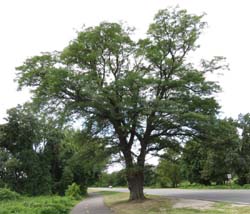
|
30 July 2014
Silver Lake Regional Park, Haymarket, VA
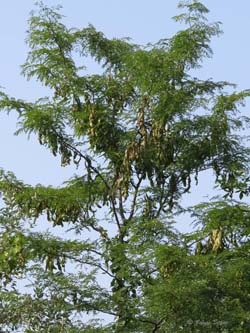
|
30 July 2014
Silver Lake Regional Park, Haymarket, VA
(spines in growing phase)
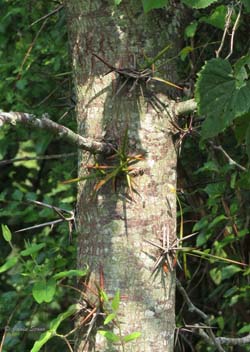
|
30 July 2014
Silver Lake Regional Park, Haymarket, VA
(older spines dried, not growing)
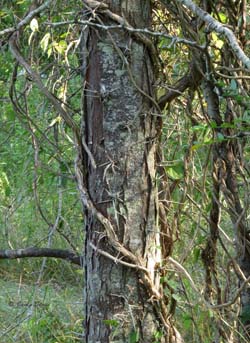
|
30 July 2014
Silver Lake Regional Park, Haymarket, VA
(closer view of old spines)
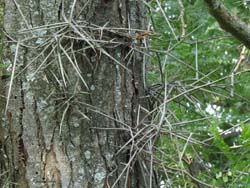
|
11 August 2014
Mount Vernon Parkway, Belle Haven, Alexandria, VA
(trunk approximately 3 feet in diameter)
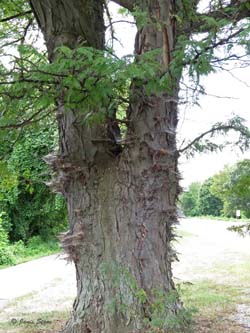
|
30 July 2014
Silver Lake Regional Park, Haymarket, VA
(specimen without trunk spines; note distinctive bark)
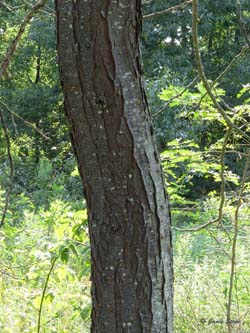
|
30 July 2014
Silver Lake Regional Park, Haymarket, VA
(compound leaves)
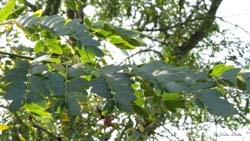
|
30 July 2014
Silver Lake Regional Park, Haymarket, VA
(ripening seed pods)
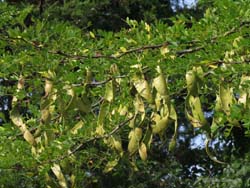
|
30 July 2014
Silver Lake Regional Park, Haymarket, VA
(ripening seed pods)
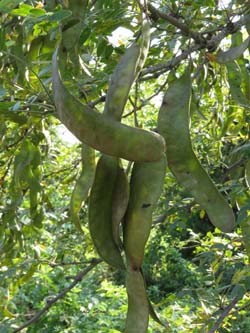
|
|
|
Return to list of flora









